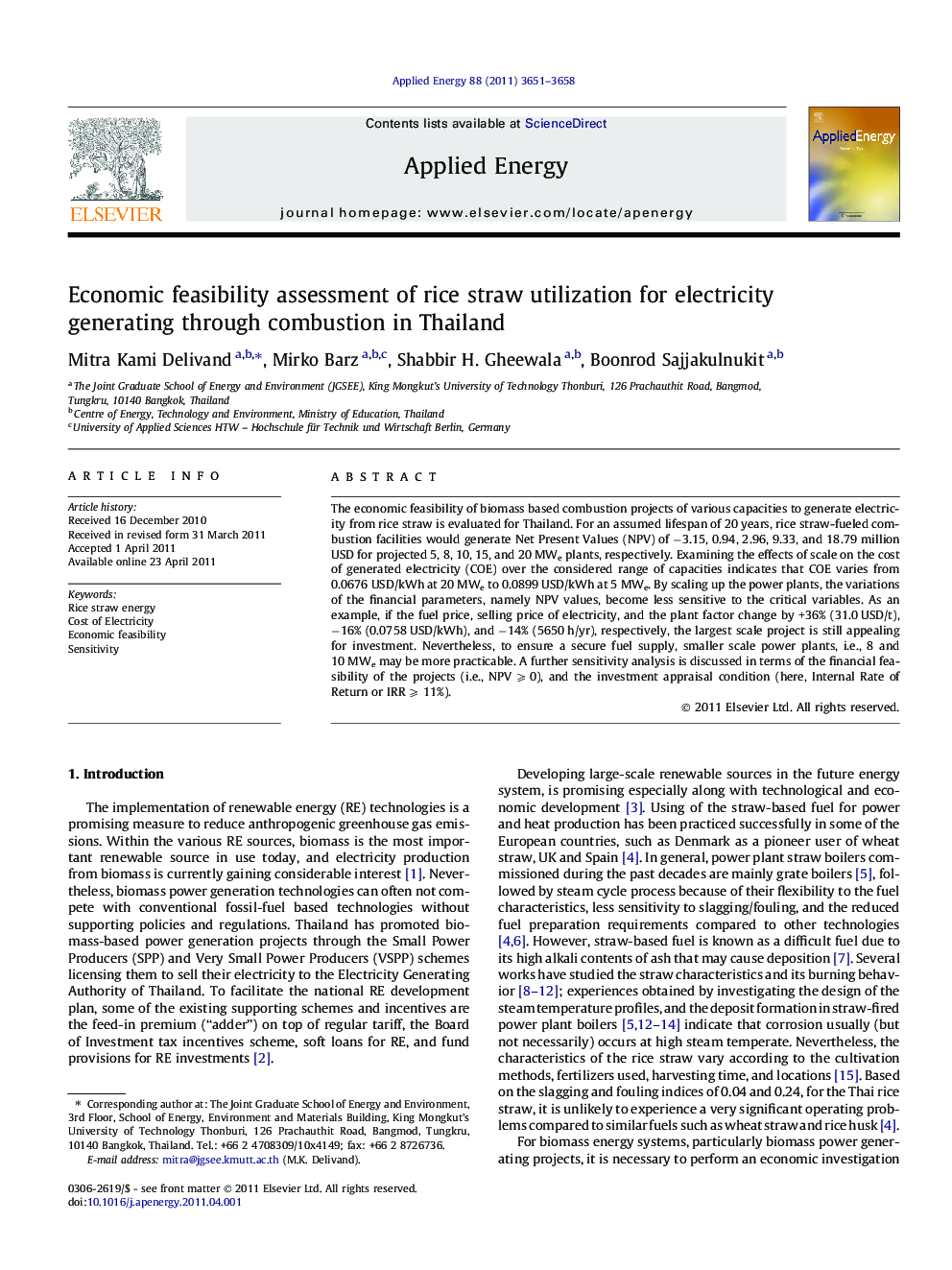| Article ID | Journal | Published Year | Pages | File Type |
|---|---|---|---|---|
| 244173 | Applied Energy | 2011 | 8 Pages |
The economic feasibility of biomass based combustion projects of various capacities to generate electricity from rice straw is evaluated for Thailand. For an assumed lifespan of 20 years, rice straw-fueled combustion facilities would generate Net Present Values (NPV) of −3.15, 0.94, 2.96, 9.33, and 18.79 million USD for projected 5, 8, 10, 15, and 20 MWe plants, respectively. Examining the effects of scale on the cost of generated electricity (COE) over the considered range of capacities indicates that COE varies from 0.0676 USD/kWh at 20 MWe to 0.0899 USD/kWh at 5 MWe. By scaling up the power plants, the variations of the financial parameters, namely NPV values, become less sensitive to the critical variables. As an example, if the fuel price, selling price of electricity, and the plant factor change by +36% (31.0 USD/t), −16% (0.0758 USD/kWh), and −14% (5650 h/yr), respectively, the largest scale project is still appealing for investment. Nevertheless, to ensure a secure fuel supply, smaller scale power plants, i.e., 8 and 10 MWe may be more practicable. A further sensitivity analysis is discussed in terms of the financial feasibility of the projects (i.e., NPV ⩾ 0), and the investment appraisal condition (here, Internal Rate of Return or IRR ⩾ 11%).
► A cost correlation model is developed to investigate the capital cost of straw-based power plants. ► Economic criteria for plant capacities of 5, 8, 10, 15, and 20 MWe are evaluated. ► COE for such systems is 0.0676 USD/kWh at 20 MWe rising to 0.0899 USD/kWh at 5 MWe. ► NPV is greatly influenced by the economies of scale. ► Changes in plant factors, electricity prices, fuel prices, and capital costs are examined.
